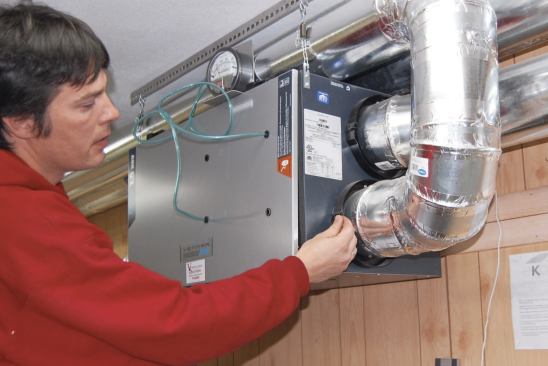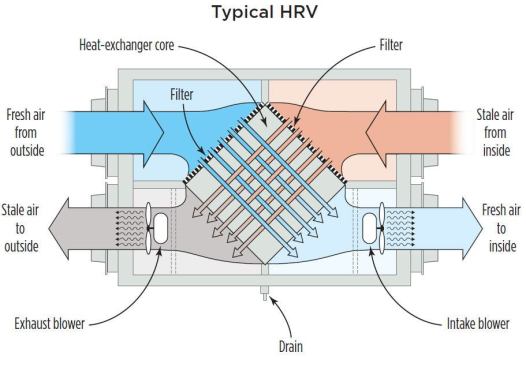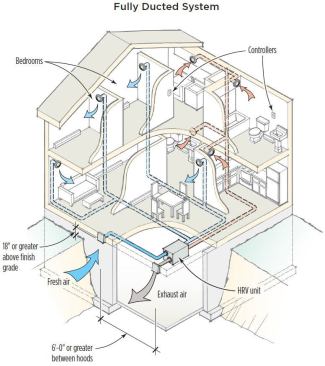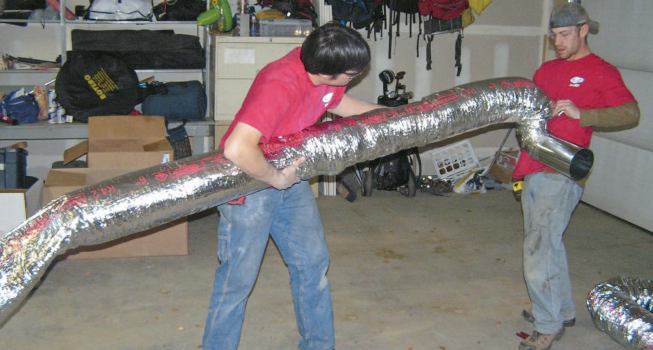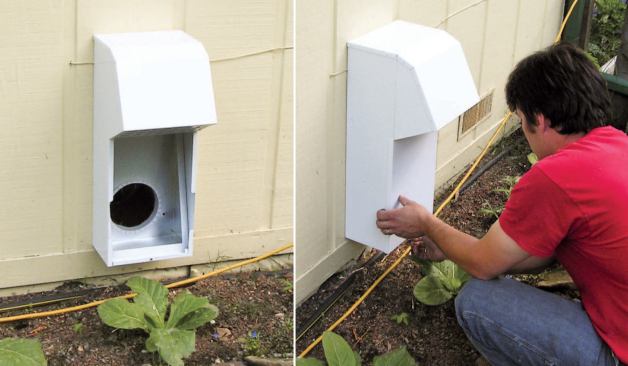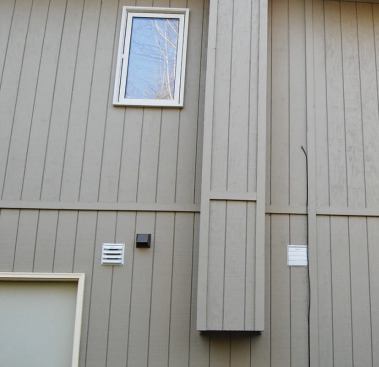A heat-recovery ventilator (HRV) pulls in fresh outdoor air whil…
Balancing the System
Although an HRV’s intake and exhaust blowers are designed to move the same amount of air, they can’t do so unless the static pressure in the supply ducts matches the pressure in the exhaust ducts. But given the variations in the size and layout of the ducting, that’s unlikely to happen on its own. That’s why all newly installed systems must be balanced, or adjusted to make sure that the same amount of air comes in through the HRV as goes out.
To balance a new system, we start by turning the HRV fan on high and connecting a Magnehelic differential pressure gauge to the measuring ports. The procedure from that point on varies, depending on the HRV used. Some models have built-in balancing dampers that can be adjusted to equalize the airflow; on other models, we have to adjust the speed of the blower motors.
Air Filtration
We offer our customers an optional high-efficiency air-filtration system as an $800 upgrade. The filter unit is installed on the warm-side supply ducts so that it removes particles from the incoming air and repeatedly filters indoor air when the unit is run in the recirculation mode.
Custom-made housing. Although we could buy off-the-shelf filter units, we prefer to have our filter housing custom-made so that it can be configured to hold our preferred filter media. Also, our housings hold three filters — rather than the usual two — and accept standard 16-by-20-inch media, a readily available size that is inexpensive to replace and does not unduly restrict airflow. We specify the location of the duct collars and the direction of airflow, which saves us from having to adapt a factory-made unit.
Filter options. The custom housing typically contains a 1-inch MERV 8 prefilter, a 2-inch MERV 11 pleated filter, and a carbon filter (MERV refers to minimum efficiency reporting value, the ASHRAE standard for air filters). A MERV 8 filter traps at least 70 percent and MERV 11 at least 85 percent of particles between 3.0 and 10.0 microns in size. The less-expensive prefilter extends the life of the pleated filter behind it.
As a further upgrade, we can offer MERV 15 pleated filters — which capture 85 to 94 percent of particles from 0.3 to 1.0 micron in size — for performance rivaling that of a HEPA filter. We don’t recommend HEPA filters themselves because they are expensive and greatly compromise airflow. The carbon filter is designed to trap odors and noxious gases, and is available in different grades and for use with a variety of pollutants.
Richard Musick owns Ventilation Solutions in Fairbanks, Alaska. Ilya Benesch is a building educator at the Cold Climate Housing Research Center, also in Fairbanks.
